Tides, which are the rise and fall of sea levels, occur due to the gravitational attraction between the Earth, the Moon, and the Sun. But did you ever wonder what tide is best for kayaking? They have a massive impact on everything from navigation to water conditions. It can make or break your kayaking adventure in the blink of an eye!
Imagine the rhythmic, gentle lap of the sea against your kayak. The salty breeze teasing your senses, the hypnotic dance of the sea’s ebb and flow beneath your kayak. What if you are swiftly shattered by an unexpected tide, turning your tranquil adventure into a battle against the forces of nature?
Not so enjoyable anymore, right? That’s why understanding tides is crucial for a safe and fun-filled kayaking experience.
Tides are like nature’s rollercoaster, with their ebb and flow dictating the rhythm of the water. So knowing how tides work can help you ride those waves like a boss.
Check also: Understanding The Rhythms Of The Waves For Kayaking
In this guide, we’ll explore how these natural forces influence your kayak journey and equip you with the knowledge to conquer any tide that comes your way. Let’s start!
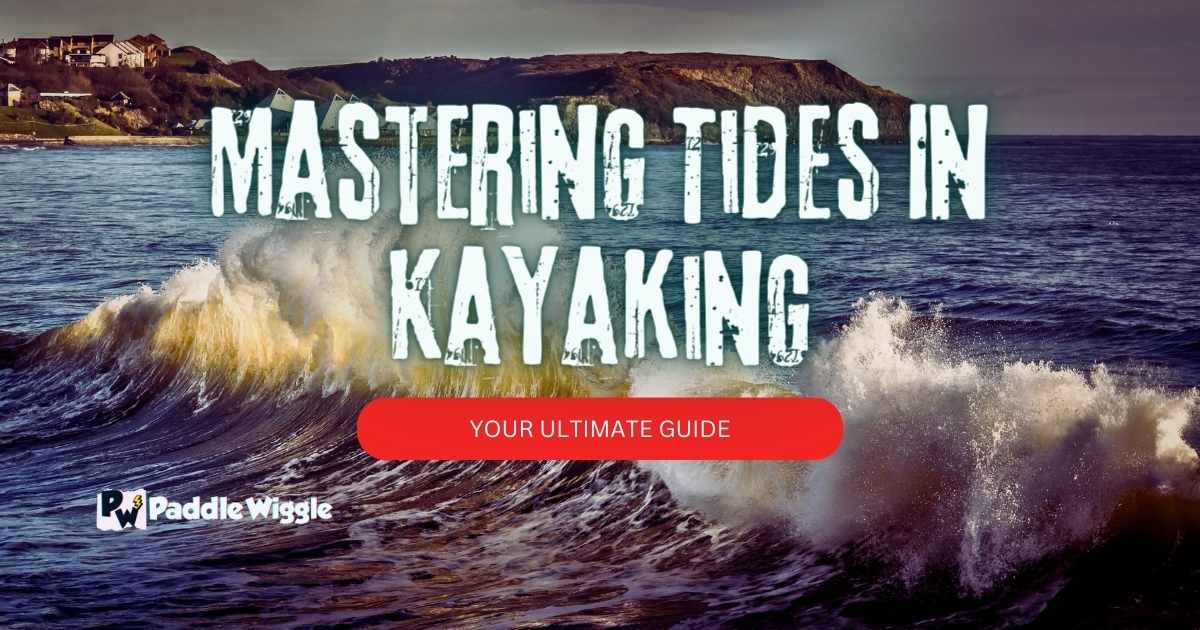
Understanding Tides & How They Impact Kayaking
The primary factors involved in creating tides are the Moon, the Earth, and the Sun. When a specific region of ocean water is directly beneath the Moon, it gets pulled towards the Moon due to the Moon’s gravitational force. This creates a bulge, a high tide, on the ocean’s surface.
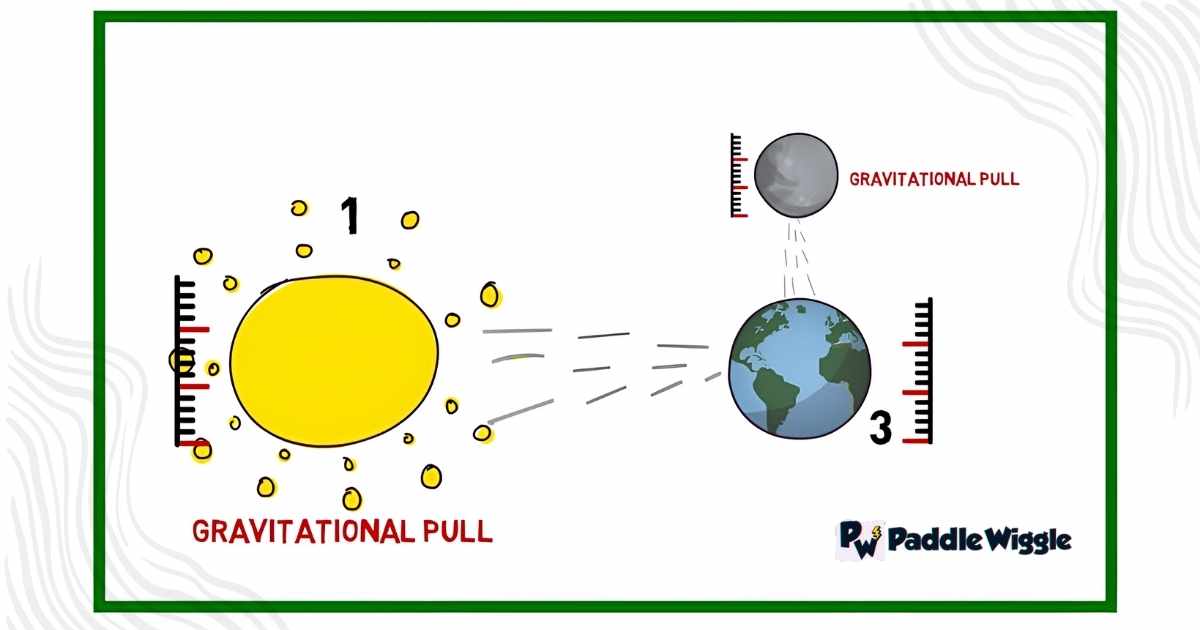

Simultaneously, another bulge of ocean water is on the other side of the Earth. This occurs because that side is further away from the Moon, and the centrifugal force (outward force) counterbalances the gravity, creating a second high tide.
Thus, two tidal bulges are formed on opposite sides of the Earth. The sides where these bulges occur experience high tides, while the side at a right angle to the Moon experiences low tides.
For kayakers, understanding the tidal patterns is essential for planning their trips. Paddling during high tide can benefit some areas with more water depth while paddling during low tide might be more suitable in shallow areas.
Let’s take a close look at how they truly affect the kayaking experience:
Water Depth and Moving Your Kayak
Tides directly impact water depth, which in turn affects kayak maneuverability. This can make moving your kayak easier or harder.
When the tide is high, and the water is deep, you can smoothly paddle your kayak, even in places that are usually too shallow. But when the tide is low, and the water isn’t deep, some parts might be too shallow to kayak safely. You might hit the bottom!
So, always remember what the tide is doing to ensure you can move your kayak around without getting stuck.
Speed of Water and Choosing Your Path
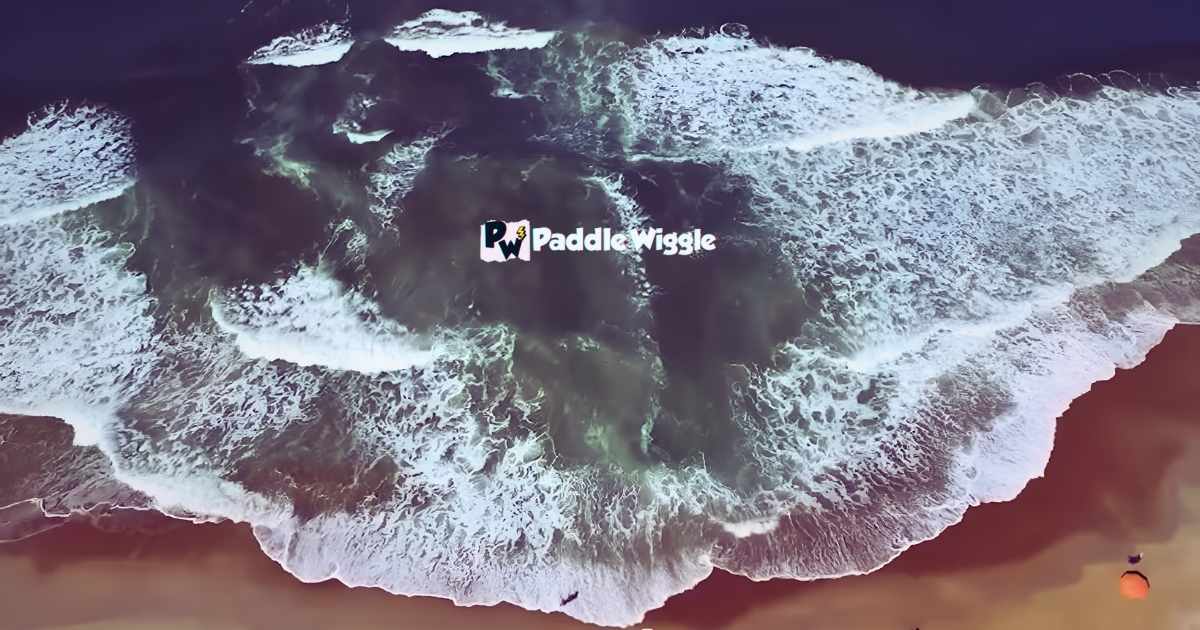

Changing tides bring about varying current speeds that kayakers need to consider. As the tide shifts, currents can become stronger or weaker, influencing both speed and direction.
Paddling against a strong current can be challenging and physically demanding while riding with a swift current can provide an exhilarating experience.
If you understand how the tides change the current, you can pick the best path for your kayak.
Landings and Launchings
The tidal cycle also affects the availability of kayakers’ launch points and landing spots. Typically, two high tides and two low tides each day (semidiurnal).
Some places are easy to get to at certain tide levels. For example, some areas might have hidden hazards like rocks during low tide.
So, always check a tide chart before you go kayaking. It’s like a timetable that tells you what the tide will be doing at different times of the day.
Knowing how tides change the water depth, the speed of the current, and where you can start and finish your journey will help you kayak confidently and safely. Plus, it adds a fun challenge to your kayaking adventure!
Wildlife Interaction


Tides, the rise and fall of sea levels, are a natural phenomenon. These water level changes affect sea animals and where they hang out, eat, and have their babies.
The ocean rises further on the beach when it’s high tide. This changes where sea creatures go and what they do. For instance, some animals that can be dangerous, like sharks or stingrays, might come closer to where people swim during high tide.
Stingrays especially might hide under the sand in shallow water during this time, which could lead to surprise meetings with people playing on the beach.
High Tide vs. Low Tide: What Tide is Best for Kayaking?
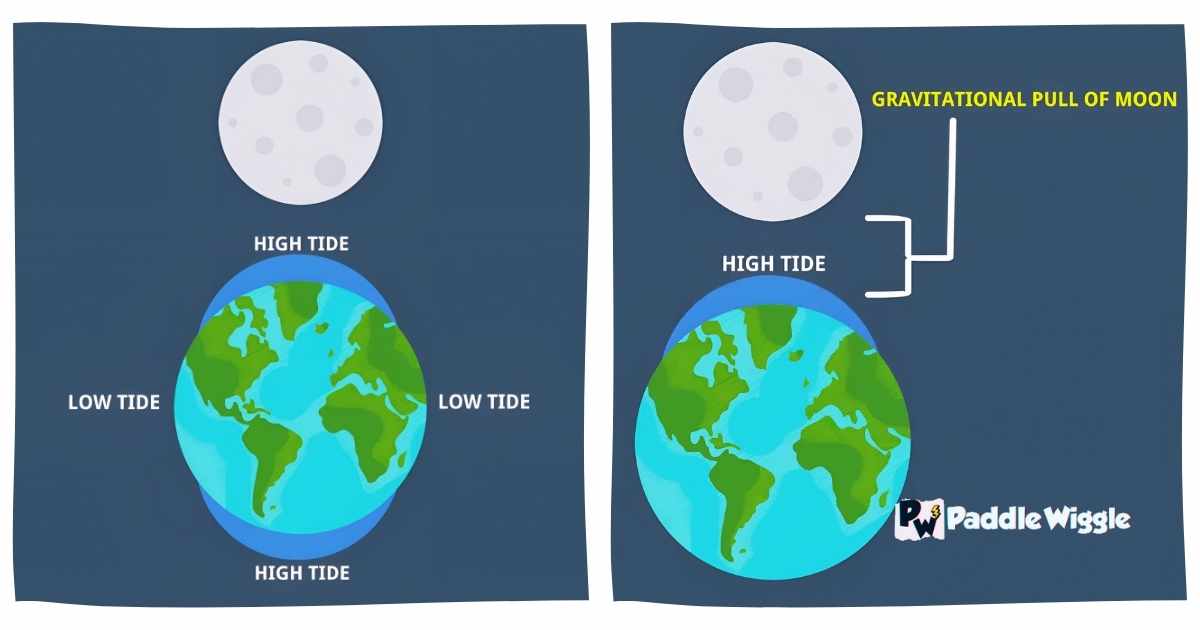

Kayaking enthusiasts often wonder about the best tide for their adventures on the water. Both high tide and low tide conditions can present unique opportunities and challenges for kayaking, depending on your location and goals.
But what tide is best for kayaking? As a general rule of thumb, kayaking is often considered to be safer and easier around high tide.
During high tide, you’ll find deeper water, which can make it easier to avoid obstacles that might be lurking beneath the surface, such as rocks, reefs, or seaweed. However, strong currents and landing difficulty on steep shores can be challenges.
While at low tide, you have to be extra careful not to get stuck on these features or find yourself too far from the water when the tide goes out.
Here’s a brief overview of both:
High Tide
High tides bring deeper waters, opening up access to otherwise unreachable areas during low tides. Here are some advantages of kayaking during high tide:
- Deeper waters provide ample space for navigation and maneuvering.
- You can explore hidden coves and channels that are submerged during low tide.
- High tides offer a smoother paddling experience with fewer obstacles.
However, the high tide also has its downsides: – Stronger Currents: The water movement during high tide can be quite strong. This could make paddling more difficult, especially for beginners. – Difficulty Landing: If you’re kayaking along a steep shore, high tide can make finding a suitable landing spot more challenging.
Low Tide
On the other hand, low tides reveal hidden features such as sandbars or reefs, offering unique opportunities for exploration. Consider these points when considering kayaking during low tide:
- Exposed sandbars create temporary islands where you can rest or enjoy picnics.
- Reefs become visible, allowing you to observe marine life in their natural habitat.
- Paddling through shallow waters can provide a thrilling challenge.
Choosing between high or low tide ultimately depends on personal preferences and desired experiences. Some kayakers prefer the tranquility of high tides, while others enjoy the excitement of exploring exposed features during low tides.
Regardless of the tide, always make sure to check local tide tables and weather conditions before you go. Kayaking in strong tidal currents or stormy conditions can be dangerous, especially for beginners. And always, regardless of tide, remember to wear a life jacket and follow safe kayaking practices.
How to Read Tide Charts for Kayaking?
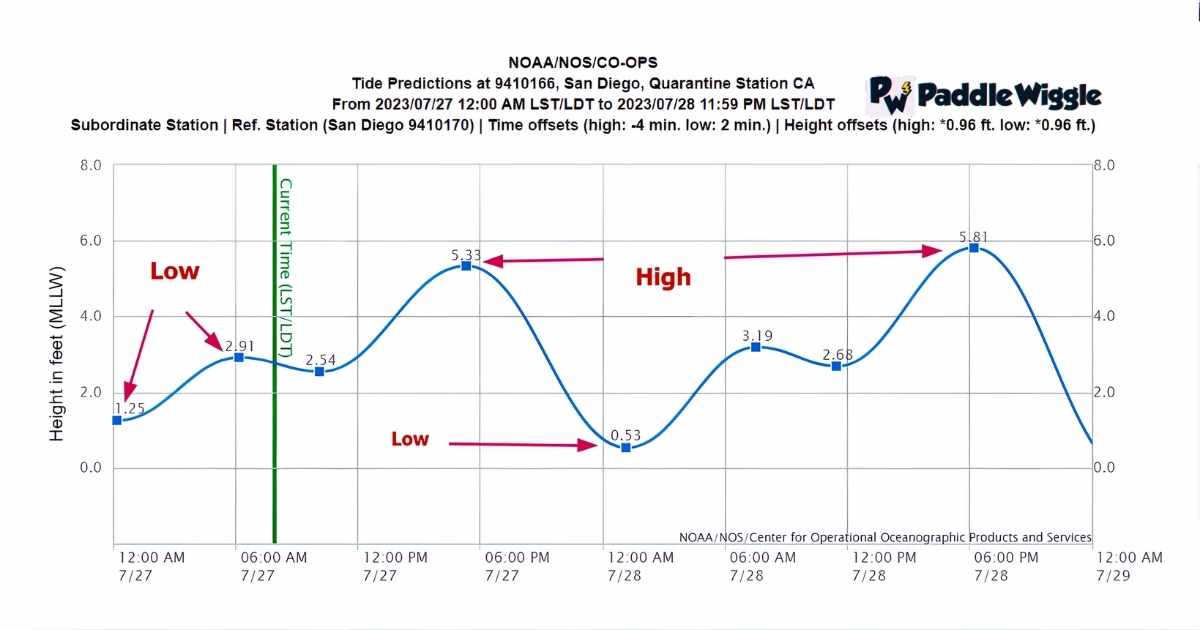

Going on a kayak ride is super fun, but you need to plan it well and know about the tides – how the sea level goes up and down. They can significantly impact your kayaking adventure, affecting everything from the route you take to the effort you’ll need to paddle. So the essential tool to help you plan is a tide chart!
And if you can’t read it well, you might face a number of challenges or even dangerous situations during your kayaking trip.
For example, if you paddle along with the tide, it’s like having the sea help push you along, and you won’t get as tired. But if you paddle against it, it’s like trying to walk up a down escalator – it’s a lot harder!
Let’s learn how to read a tide chart for kayaking:
Find and Understand the Tide Chart
The first step is to find a tide chart for the area where you plan to kayak. You can find these online in local marinas or boating shops. Smartphone apps like “Tides Near Me” also provide tide charts.
Understand that the tide chart shows the predicted times and amplitude (or height) of a specific area’s high and low tides. They are typically displayed in a graph format, with the vertical axis representing the tide height and the horizontal axis representing time.
Identify High and Low Tides and Their Times
On the chart, look for the highest and lowest points. These represent the high and low tides, respectively. The times for high and low tides are usually listed at the bottom of the chart. These times are typically given in a 24-hour format.
Make sure to check whether the times are given in local time or another time zone.
Monitor Changes and Learn Local Conditions
It’s time to monitor the tide chart and the actual conditions as your kayaking day progresses. The tide can change significantly during your trip, affecting your kayaking experience. You must also understand the local conditions, as tides can cause strong currents or expose hazards.
Based on these factors, you may need to adapt your kayaking plan to ensure safety and a good kayaking experience.
3 Techniques For Mastering Kayaking With Tides
Tides vary; diurnal tides have one high and low tide per day, while semidiurnal tides have two of each, impacting your experience depending on your location and conditions. And adapting to tidal changes is crucial to avoid getting stranded in shallow waters. As tides ebb or flow, water levels rise or fall accordingly.
So it’s crucial to understand what to do and how to perform in such conditions. Here’s a guide to make this easier for your next adventure:
#1. Navigational Skills
Developing effective navigation skills can aid in energy conservation, enabling you to plan and follow a course that maximizes the use of tidal streams to your advantage. This can turn a challenging paddle into a more enjoyable journey.
Here are a few kayak navigational skills for tidal conditions:
Tidal Streams
Tidal streams can either assist or hinder your journey. Going with the tide (flood tide) can help conserve energy while going against it (ebb tide) requires more effort. Learn how to identify and use tidal streams to your advantage.
Identify Landmarks
Identify landmarks on the shore to help you understand your position relative to the tide. If you are drifting sideways or are unable to progress against the tide, you may need to adjust your course.
Use a Compass
In expansive coastal regions or when visibility is low, using a compass can aid in keeping your bearings and navigating more effectively.
#2. Paddling Techniques
Paddling techniques are integral for maneuvering a kayak, especially when dealing with tides. Here are a few of them that you might need to execute during your trip:
Paddle Stroke Efficiency
Efficient paddle strokes are essential when dealing with tides. Practice and perfect various paddle strokes such as forward, sweep, and draw. Each stroke has its purpose, and knowing when to use them can greatly affect your maneuverability.
Bracing And Edging
These techniques can improve your balance and prevent capsizing in rough tidal conditions. Bracing involves leaning on your paddle for support, while edging is tilting your kayak to help in turning.
Self-rescue Techniques
Despite your best efforts, capsizing might happen. Knowing self-rescue techniques like the Eskimo roll or the paddle float rescue can be lifesaving.
#3. Using “Ferry Gliding” To Traverse Tidal Currents
Ferry gliding is a technique kayakers use to cross a river or a tidal stream without getting swept downstream. This technique can be especially helpful when reaching a specific point on the other side of a fast-moving tidal current.
To execute a ferry glide, the kayak is positioned at an angle to the current rather than trying to fight it head-on or letting it push you downstream.
Here is how you do it:
Step #1. Angle Your Kayak
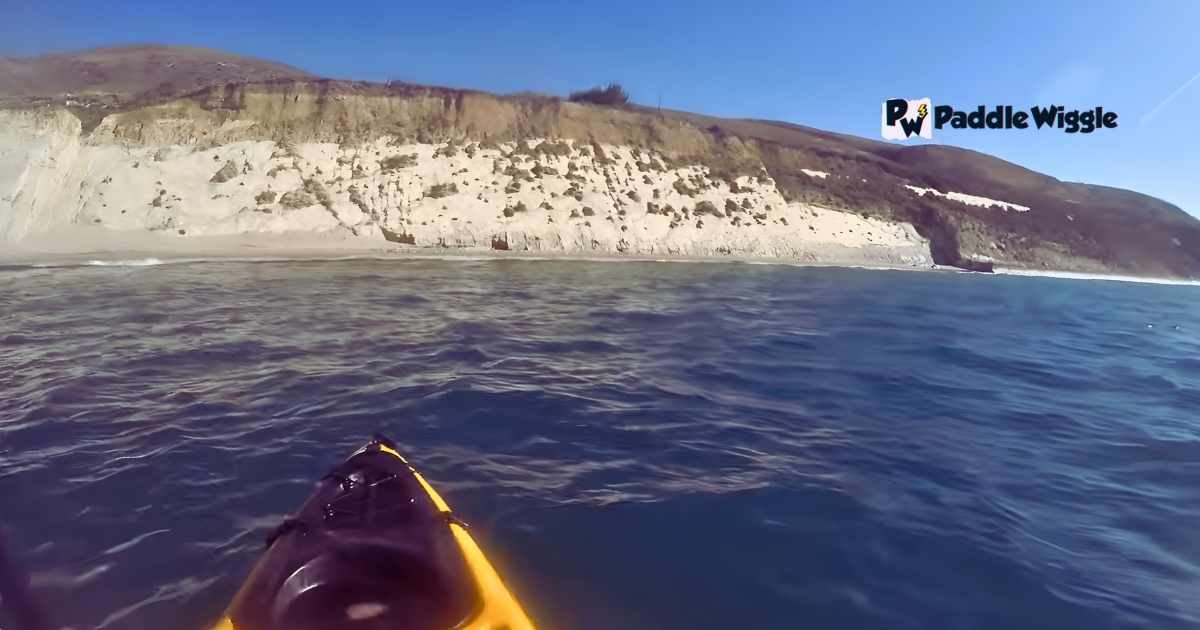

Position your kayak at a 45-degree angle facing upstream. The angle might need to be adjusted based on the speed of the current and the desired direction of travel. The faster the current, the more upstream you will need to point your kayak.
Step #2. Paddle Forward
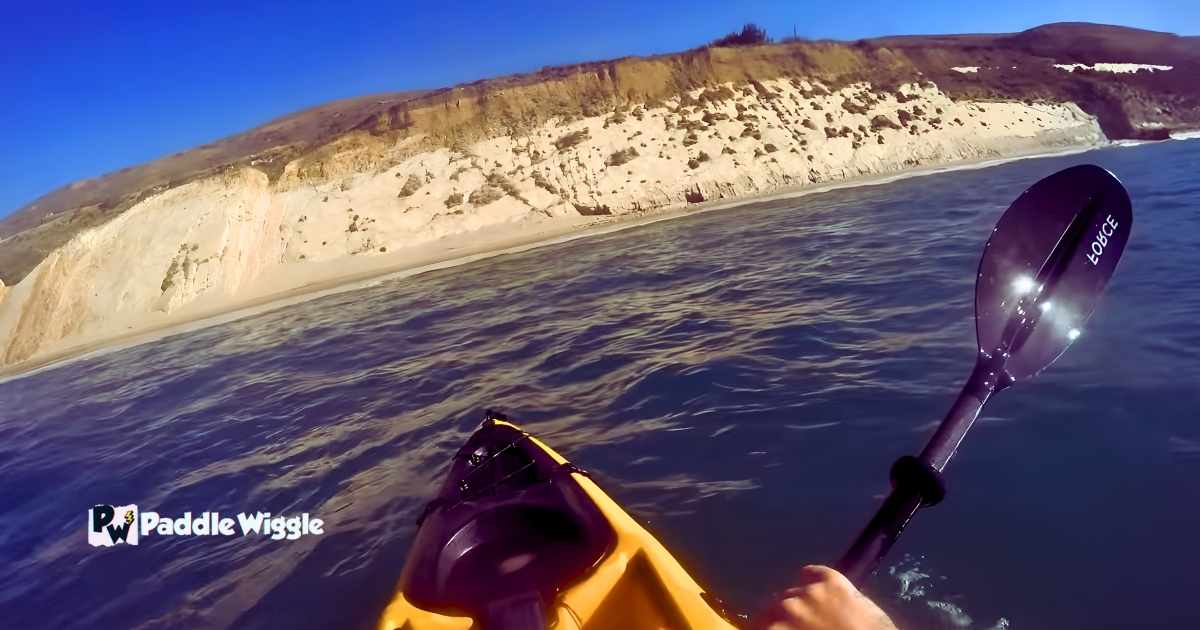

Start paddling forward. The current will push your kayak sideways across the stream as you paddle. However, because you are also moving forward, you can glide across the current instead of being pushed downstream.
Step #3. Adjust Your Path
As you move across the current, you may need to adjust your heading to maintain the proper angle to the current. This involves ‘edging’ the kayak – leaning it slightly into the current while keeping your body upright – and using sweep strokes on the downstream side to adjust your course.
Step #4. Reach Your Destination
Continue the forward paddling and course adjustments until you reach your destination point on the other side of the current.
Learn More
Can I Kayak During Any Tide?
Yes! You can kayak during any tide; however, understanding how different tides impact water depth and current strength will help you choose the most suitable conditions for your skill level.
Do I Need To Be An Expert To Kayak During Tidal Currents?
While it’s recommended to have some kayaking experience before tackling strong tidal currents, beginners can still enjoy paddling during milder tides. It’s important to assess your abilities and choose appropriate conditions accordingly.
Are There Specific Tide Charts For Kayaking?
No, tide charts are universal and used by various water enthusiasts, including kayakers. You can find tide charts online or in nautical publications that provide accurate information about tidal patterns in your area.
How Often Do Tides Change?
Tides change approximately every six hours due to the gravitational pull of the moon and sun. Understanding these changes will help you plan your kayaking trips more effectively.
Can I Kayak At Night When The Tides Are High?
Kayaking at night presents additional challenges beyond just tidal conditions. It is recommended for experienced kayakers who possess proper safety equipment, navigation skills, and knowledge of the area.
Final Words
Lastly, both high tide and low tide offer unique advantages and challenges for kayakers. By familiarizing yourself with tidal patterns, you can determine the best time to kayak in relation to tides.
To navigate tides safely and efficiently:
- Plan routes based on tidal currents.
- Stay aware of changing tides during your trip.
- Use landmarks or GPS devices to track progress against tidal movements.
- Consider water temperature when packing gear.
- Take breaks at strategic points along your journey.



